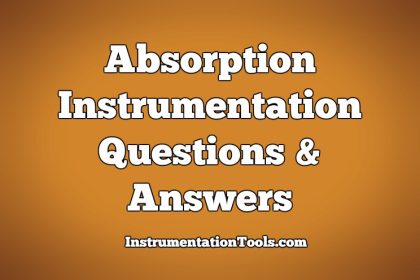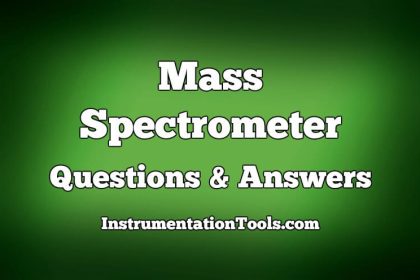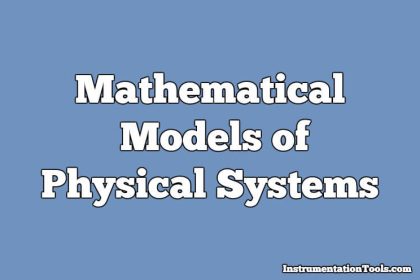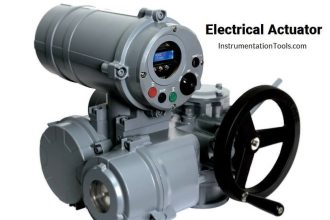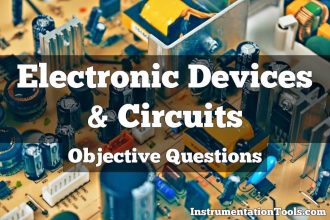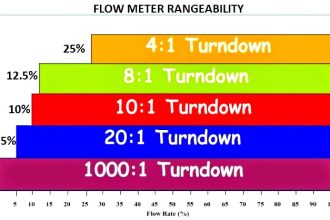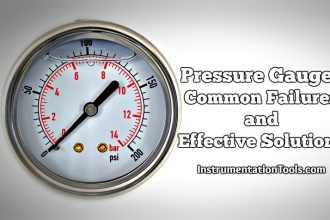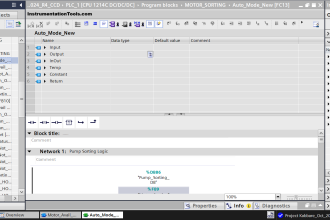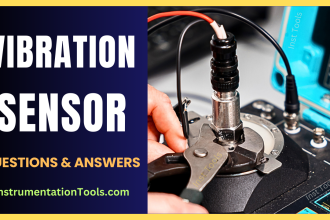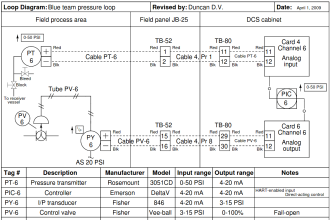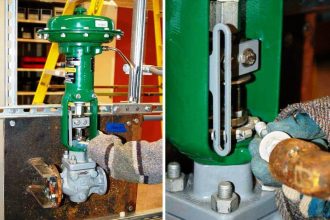Polar Plots MCQ
1. The constant M circle for M=1 is the
a) straight line x=-1/2
b) critical point (-1j0)
c) circle with r= 0.33
d) circle with r=0.67
Answer: a
Explanation: For M =1 the constant M circle is a straight line at x=-1/2.
2. The polar plot of a transfer function passes through the critical point (-1,0). Gain margin is
a) Zero
b) -1dB
c) 1dB
d) Infinity
Answer: a
Explanation: Gain margin of a polar plot passing through the critical point is zero.
3. Consider the following statements:
1. The effect of feedback is to reduce the system error
2. Feedback increases the gain of the system in one frequency range but decreases in another
3. Feedback can cause a system that is originally stable to become unstable
Which of these statements are correct.
a) 1,2 and 3
b) 1 and 2
c) 2 and 3
d) 1 and 3
Answer: c
Explanation: Feedback can cause the increase in gain and also can cause stable system to become unstable.
4. The open loop transfer function of a system is G(s) H(s)= K / (1+s)(1+2s)(1+3s) The phase cross over frequency ωc is
a) V2
b) 1
c) Zero
d) V3
Answer: b
Explanation: Phase crossover frequency is calculated as by calculating the magnitude of the transfer function and equating it to 1 and the frequency calculated at this magnitude is phase cross over frequency.
5. If the gain of the open-loop system is doubled, the gain margin
a) Is not affected
b) Gets doubled
c) Becomes half
d) Becomes one-fourth
Answer: a
Explanation: If the gain of the open-loop system is doubled, the gain margin gets doubled.
6. The unit circle of the Nyquist plot transforms into 0dB line of the amplitude plot of the Bode diagram at
a) 0 frequency
b) Low frequency
c) High frequency
d) Any frequency
Answer: d
Explanation: The unit circle of the Nyquist plot transforms into 0dB line of the amplitude plot of the Bode diagram at any frequency.
7. Consider the following statements:
The gain margin and phase margin of an unstable system may respectively be
1. Positive, positive
2. Positive, negative
3. Negative, positive
4. Negative, negative
Of these statements
a) 1 and 4 are correct
b) 1 and 2 are correct
c) 1, 2 and 3 are correct
d) 2,3 and 4 are correct
Answer: d
Explanation: For unstable system the signs of gain margin and phase margin are always different or they can both be negative.
8. If a system has an open loop transfer function 1-s / 1+s, then the gain of the system at frequency of 1 rad/s will be
a) 1
b) 1/2
c) Zero
d) -1
Answer: d
Explanation: The system is all pass system and the gain of the system at frequency of 1 rad/sec.
9. The polar plot of the open loop transfer function of a feedback control system intersects the real axis at -2. The gain margin of the system is
a) -5dB
b) 0dB
c) -6dB
d) 40dB
Answer: c
Explanation: Gain margin of the system is inverse of the intersect on the real axis and calculated in decibels.
G(s) = 1+s / s(1+0.5s).
10. The corner frequencies are
a) 0 and 1
b) 0 and 2
c) 0 and 1
d) 1 and 2
Answer: d
Explanation: Corner frequency can be calculated by time constant form of the transfer function and here the corner frequencies are 1 and 2.
11. For the transfer function G(s) H(s) = 1 / s(s+1) (s+0.5), the phase cross-over frequency is
a) 0.5 rad/sec
b) 0.707 rad/sec
c) 1.732 rad/sec
d) 2 rad/sec
Answer: b
Explanation: Phase cross over frequency is calculated at the point where magnitude of the polar plot is 1.
12. The gain margin (in dB) of a system having the loop transfer function G(s) H(s) = 2 / s(s+1) is
a) 0
b) 3
c) 6
d) 8
Answer: d
Explanation: Gain margin of a system is calculated at the phase cross over frequency and expressed in decibels.
13. The gain margin for the system with open loop transfer function G(s) H(s) = G(s) =2(1+s) / s2 is
a) 8
b) 0
c) 1
d) -8
Answer: b
Explanation: Gain margin of a system is calculated at the phase cross over frequency and expressed in decibels.
14. Statement 1: In constant M circles, as M increases from 1 to 8 radius of circle increases from 0 to 8 and Centre shifts from (-1,0) to (-8,0)
Statement 2: The circle intersects real axis at point (-1/2, 0)
a) Statement 1 is TRUE, 2 is FALSE
b) Statement 1 is FALSE, 2 is TRUE
c) Statement 1 & 2 TRUE
d) Statement 1 & 2 FALSE
Answer: d
Explanation: All the circles pass through the points (0,0) and (-1,0).



